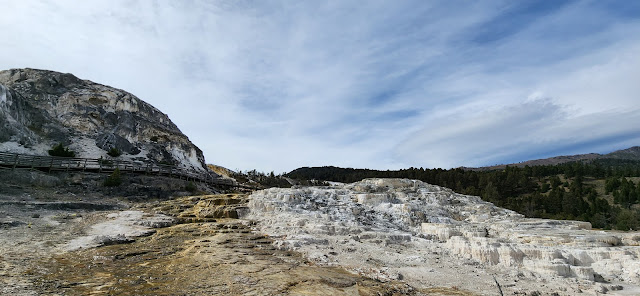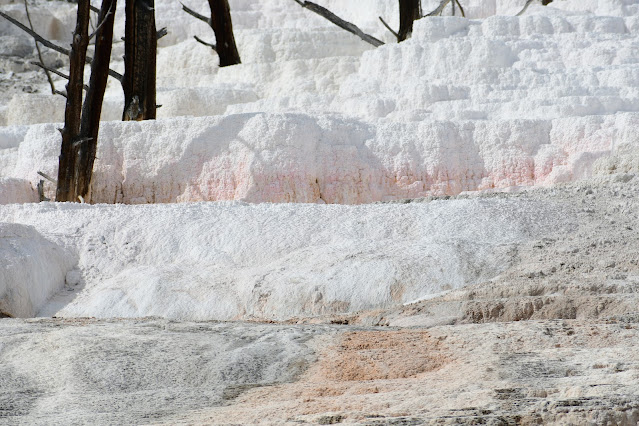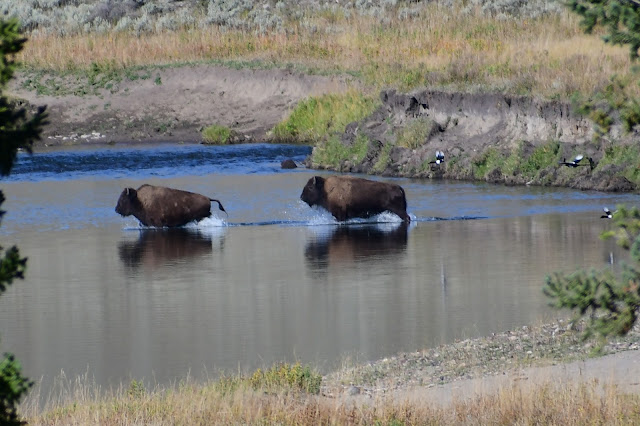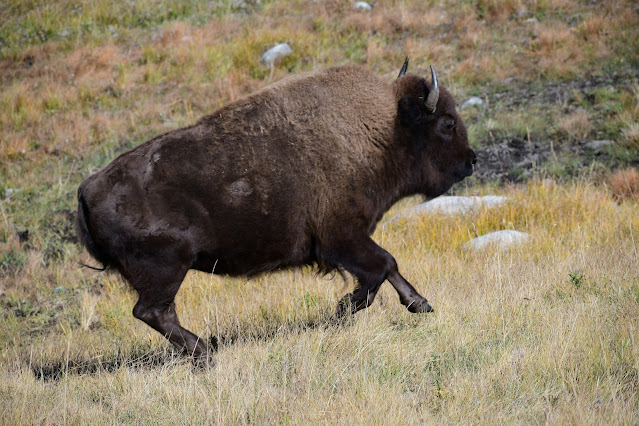Artist's Point
After lunch, we headed back to Artist’s Point in the Canyon, expecting the afternoon light to clear the shadows that had obscured our morning view. However, we quickly realized our assumption was off—the shadows remained. In hindsight, it made perfect sense, given that the canyon runs roughly west to east, limiting the sun’s reach into its depths throughout the day.
We spent time capturing more photos of the iconic Lower Falls, but also turned our lenses downstream, where the Yellowstone River has carved its way through the plateau, forming a dramatic and deeply incised canyon over time.
South Rim Trail
The South Rim Trail winds its way along the edge of the canyon, offering breathtaking views as it connects Artist’s Point with the Lower Falls. This scenic path allows hikers to take in the canyon’s vibrant walls and the thundering waterfall from multiple vantage points.
Along the South Rim Trail, we came across a variety of wildlife, including numerous squirrels and chipmunks (above) energetically gathering and hiding food in preparation for the rapidly approaching winter. Near the Lower Falls parking area, glossy black ravens put on a show of their own, hopping from tree to tree and squawking loudly—sometimes at passing tourists, other times at each other.
The final viewpoint along the South Rim Trail offers a stunning perspective of the Lower Falls, showcasing its powerful column of water as it plunges into the deep ravine below.
Upper Falls (above) is visible from a couple of convenient viewpoints near the Lower Falls parking area. While not as tall as the Lower Falls, it’s equally striking—its powerful flow fans out dramatically from the brink, surging with incredible speed and force.
We retraced our steps back to Artist’s Point and the car, and the change in perspective offered an entirely different scenic experience. This time, we were treated to expansive views of the Yellowstone River winding through the steep sandstone canyon walls.
Brink of Lower Falls
We returned along the access road beyond Upper Falls, crossing over to the North Rim for a completely new vantage point. The first viewpoint featured a steep, winding trail that led us down to the Brink of Lower Falls. The zigzagging trail was flanked by trees preparing for the coming winter, their leaves glowing gold in the afternoon sunlight and trembling softly in the breeze.
The feeling that winter is near was unmistakable, stirring vivid memories of this same season in the Canadian Rockies. The crisp air, golden leaves, and quiet anticipation in the landscape echoed the familiar transition we’ve experienced before—nature slowly winding down in preparation for the long, cold months ahead.
From the viewing platform, we had a commanding view down the canyon, including a clear look at the South Rim Trail we had spent the past few hours exploring—now seen from an entirely different perspective.
The viewing platform brings you impressively close to the Lower Falls, offering a powerful sense of just how much water surges through this narrow section of the canyon. Standing there, you can feel the energy in the air—the roar, the spray, and the sheer force of the Yellowstone River as it plunges downward.
It's hard to fathom that part of this powerful torrent may have tumbled over the edge at Tower Fall just a day earlier.
North Rim Drive
From Lower Falls, we followed the one-way North Rim Drive, pausing at several scenic viewpoints along the route—starting with Lookout Point. While the view of Lower Falls is somewhat obscured from this angle, the overlook offers a beautiful glimpse downstream into the rugged, expanse of the Yellowstone Canyon.
The next stop along North Rim Drive is Grand View, where the canyon truly lives up to its name. From this vantage point, you get a sweeping view of the heart of the Grand Canyon of the Yellowstone. The towering sandstone spires near Grand View are particularly striking—some so slender and gravity-defying, they seem almost impossible.
Interestingly, all the Yellowstone Canyon viewpoints share names with those on the Grand Canyon’s North Rim—including the final stop, Inspiration Point. From this lofty perch, we had a clear view upriver, where the Yellowstone River cascades down a series of small, steps carved into the canyon.
It had been a full and rewarding day spent exploring the Yellowstone River, from the calm shores of the lake to the dramatic depths of the canyon. As the sun dipped toward the western horizon, casting a golden glow across the landscape, we knew it was time to rest and refuel with a well-earned dinner.























































